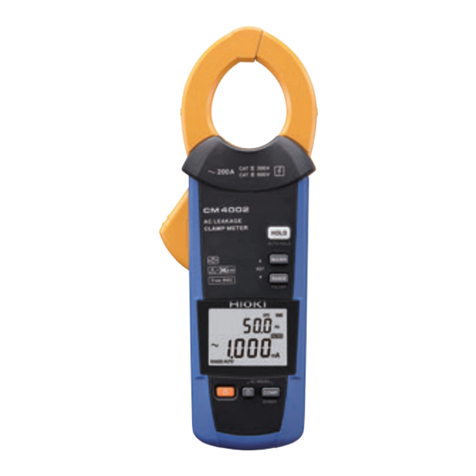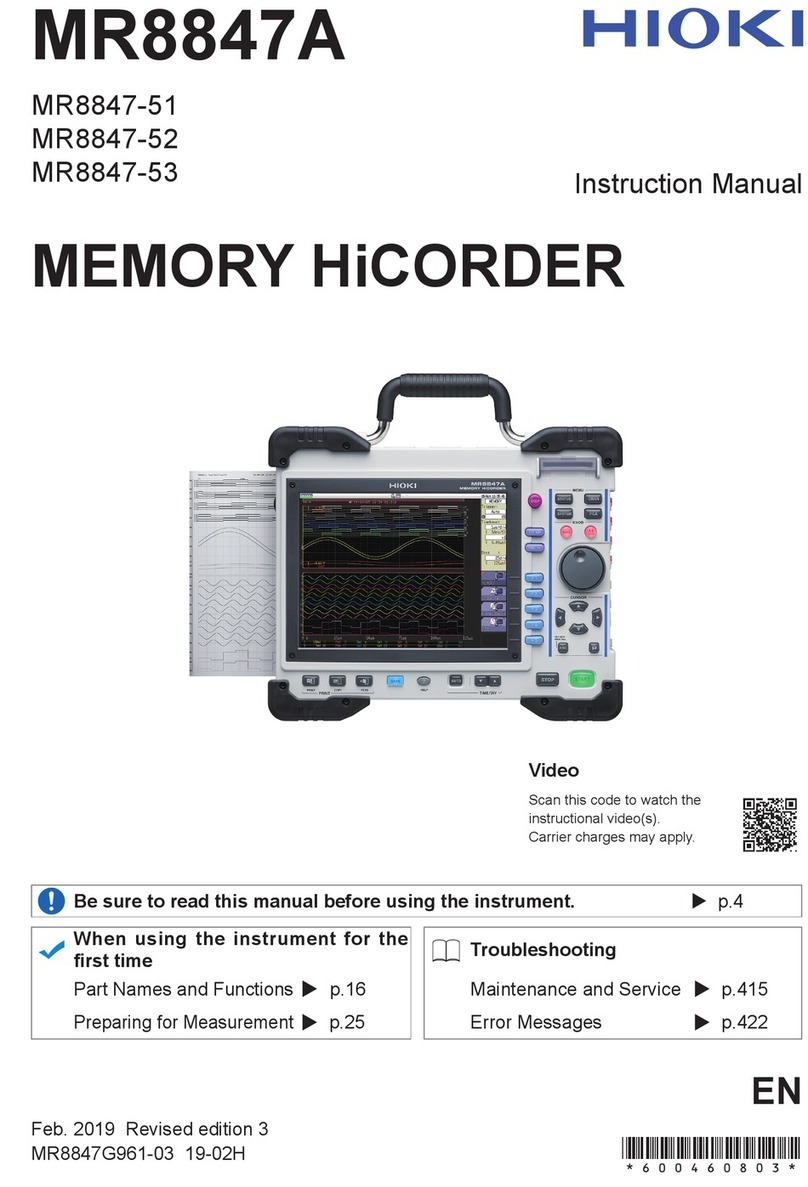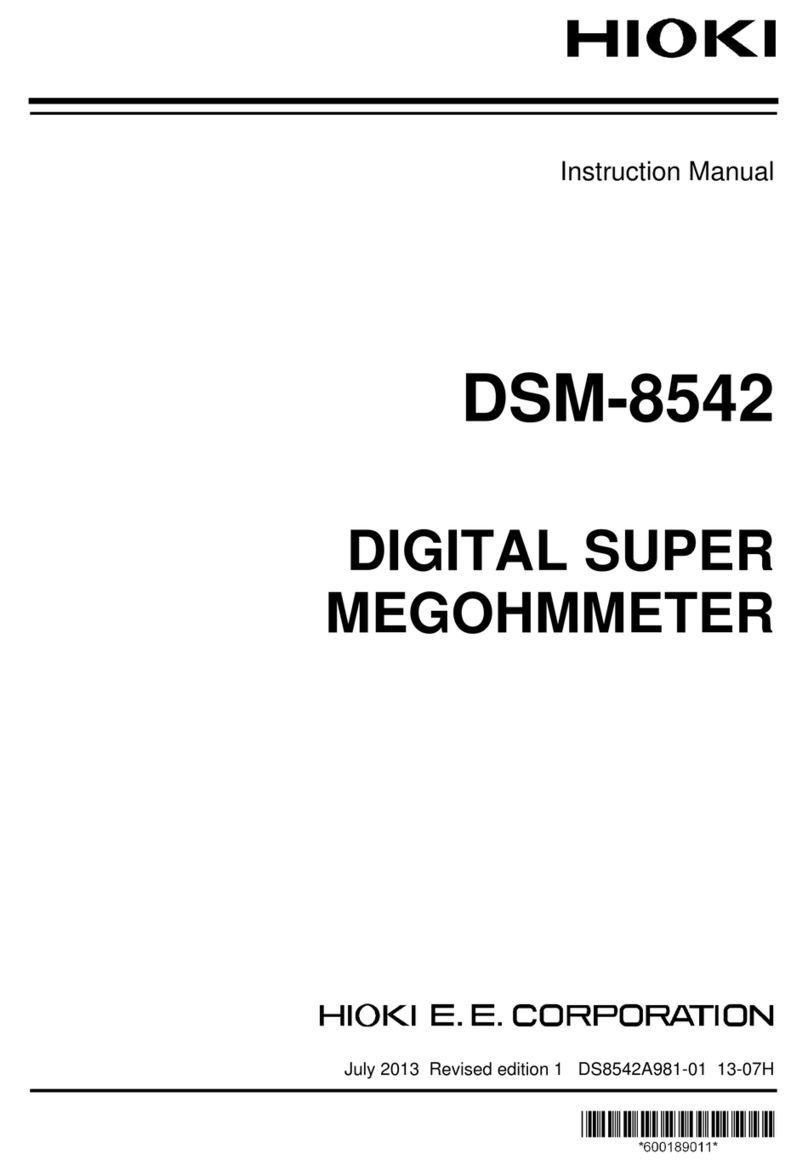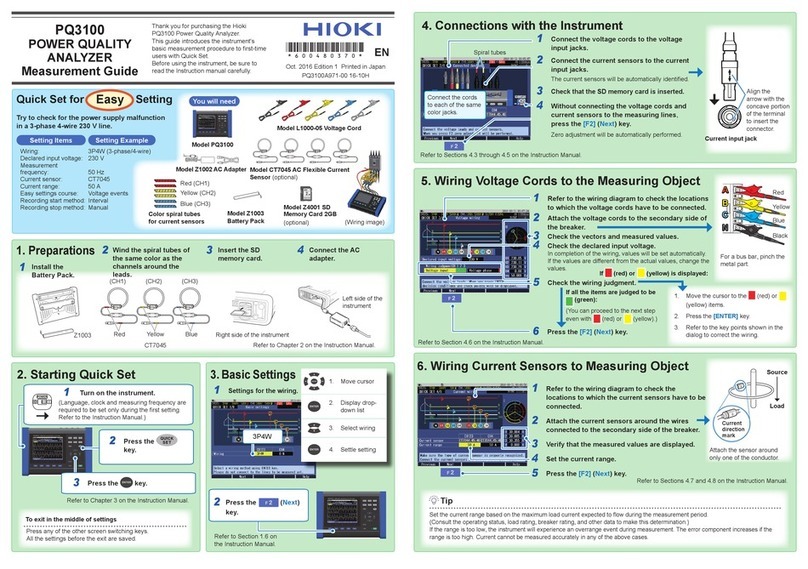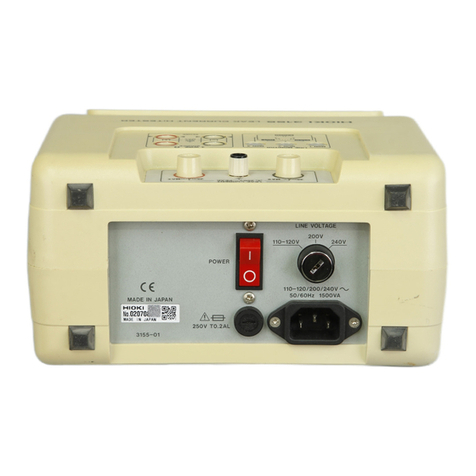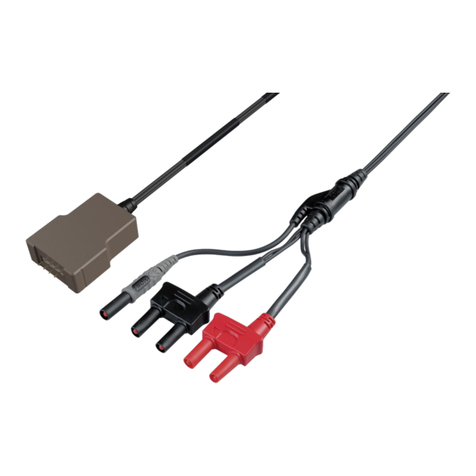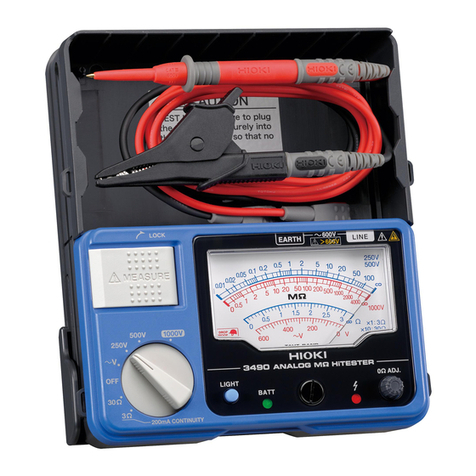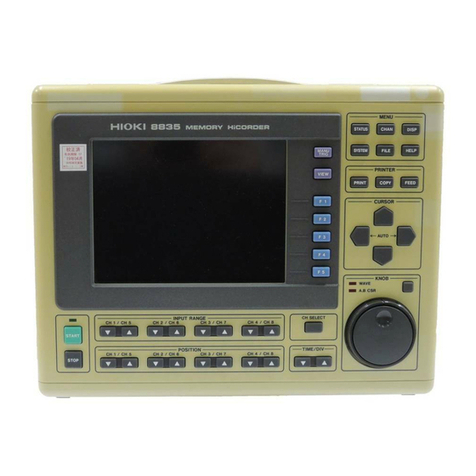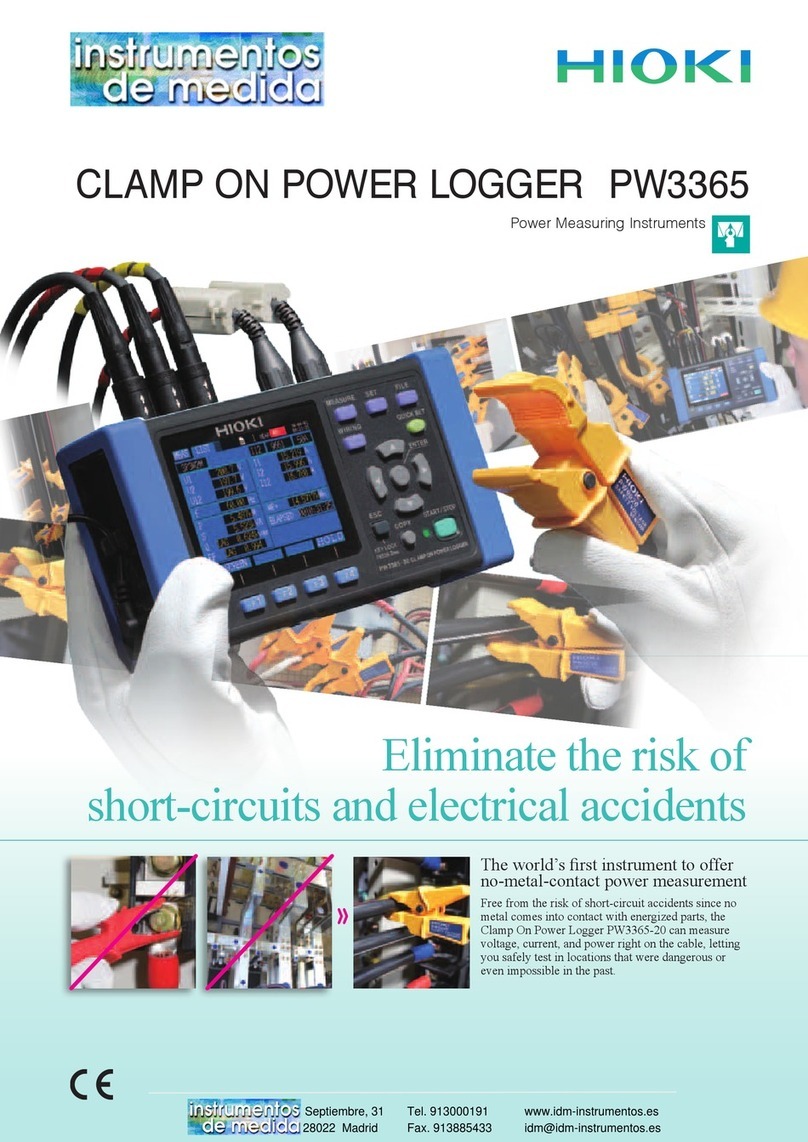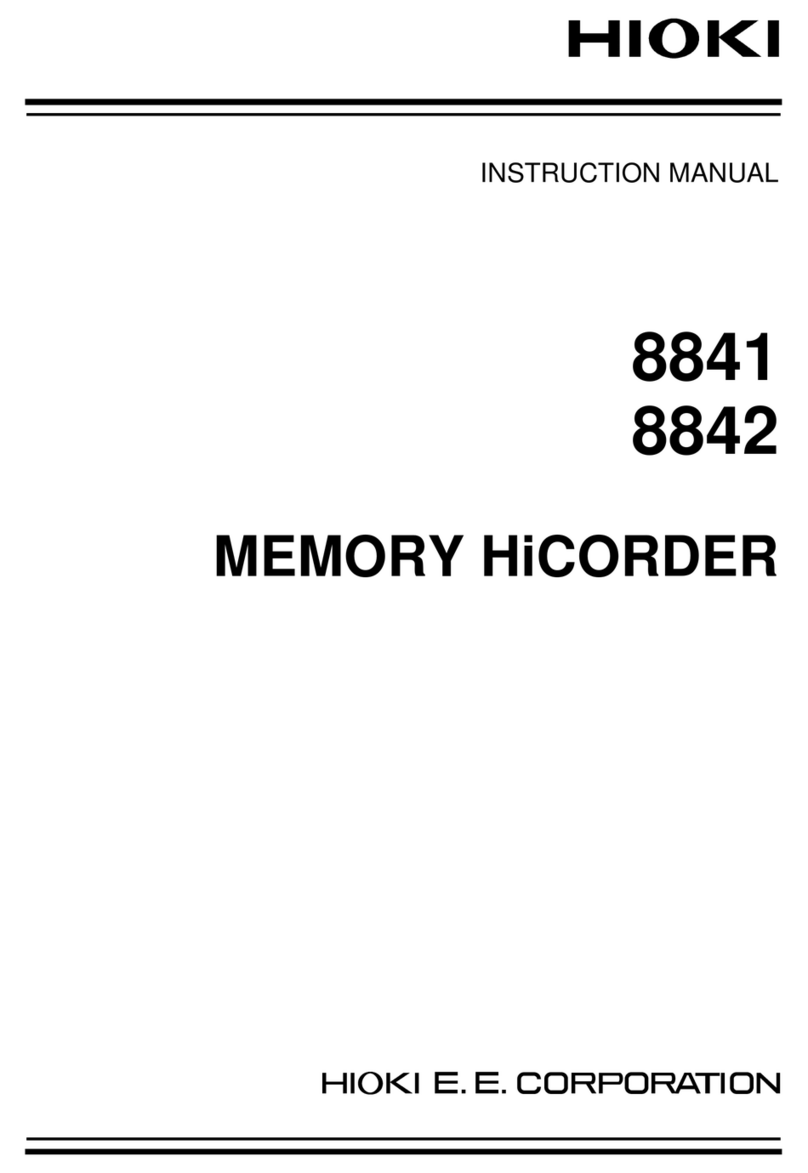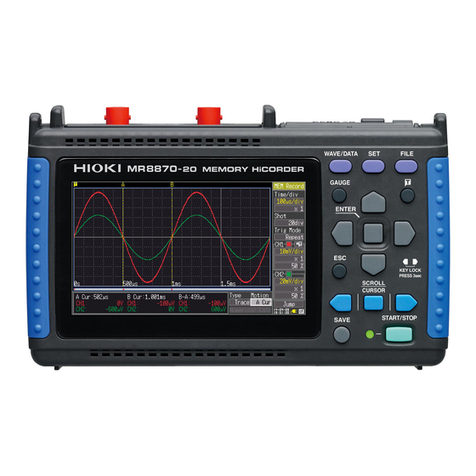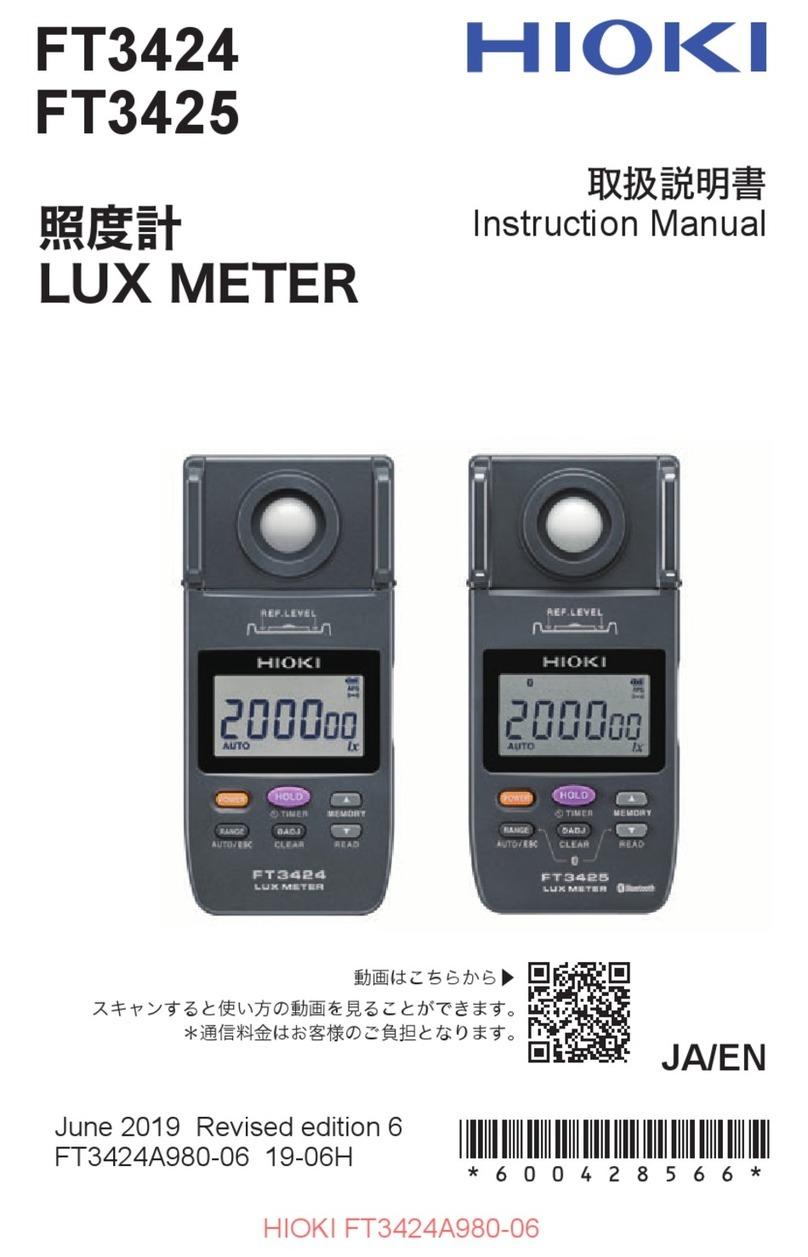
i
Out-of-range indication ...............................39
3.8 Basic Measurement Examples......... 40
4 Applied Measurement 43
4.1 Starting Measurement After
Measured Value Becomes Stable
(Delay Function)............................... 43
4.2 Reducing Variation in Measured
Values (Average Function)............... 44
4.3 Changing Measurement Starting
Conditions (Trigger Function)........... 46
Setting the trigger mode .............................46
Inputting an external trigger ........................46
4.4 Maintaining Measurement
Accuracy (Self-Calibration Function) 47
4.5 Contact Check (Various Settings) .... 49
4.6 Canceling Capacitance of
Measurement Fixture
(Fixture Capacitance Open
Correction Function)......................... 52
4.7 Contact Check (Executing Contact
Check,Setting Reference Value) ..... 53
4.8 Setting Resistivity Calculation
(Resistivity Measurement Function). 55
4.9 Further Accelerating Measurement
(Function of Updating Drawing
During Measurement) ...................... 58
5 Measurement Methods
Suitable for Various
Objects to Be Measured 59
5.1 Measuring Components of Circuits .. 59
Measurement with use of a
measurement xture ...................................60
Measurement without use of a
measurement xture ...................................61
Automatic measurement.............................62
5.2 Measuring Flat Sample .................... 63
Measurement using pin type terminals .......63
Measurement using an electrode for
measuring surface resistance.....................63
Measurement using an electrode for a
at sample ..................................................64
Volume resistance measurement and
surface resistivity measurement
(the functional role of the guard electrode) .64
5.3 Measuring a Liquid Sample.............. 66
When using an electrode for liquid
samples ......................................................66
5.4 Measurement With Use of
Shielding Box ................................... 67
Contents
Introduction.................................................. 1
Notati ........................................................... 1
Verifying Package Contents ........................ 3
Measurement Procedure............................. 6
Safety Information ....................................... 7
Operating Precautions................................. 8
1 Overview 15
1.1 Product Overview and Features....... 15
1.2 Names and Functions of Parts......... 16
1.3 Screen Conguration and Operation 21
Measurement screens ................................21
Settings screens .........................................22
1.4 Basic Key Operation ........................ 23
Displaying measurement screen ................23
Displaying the various menu settings
screens .......................................................23
Selecting settings items ..............................24
Methods for changing numerical values .....25
2 Preparing for
Measurement 27
2.1 Connecting Power Cord to
Instrument ........................................ 27
2.2 Connecting Measurement Leads
to Instrument .................................... 28
2.3 Connecting Electrode....................... 28
2.4 Connecting Humidity Sensor............ 29
2.5 Outputting Measurement Current
Value Converted to Analog Signal.... 30
2.6 Turning On/Off Instrument................ 31
2.7 Inspection Before Use...................... 32
3 Basic Measurement 33
3.1 Setting Measured Value Display
Mode ................................................ 33
Changing display notation ..........................34
Changing displayed digits...........................34
3.2 Setting Voltage Value for
Resistance Calculation..................... 35
3.3 Setting Measurement Speed............ 36
3.4 Changing Current Range ................. 37
3.5 Connecting Measurement Leads
or Electrode to Object to Be
Measured ......................................... 38
3.6 Starting/Stopping Measurement....... 39
3.7 Conrming Measurement Results.... 39
Detecting a measurement abnormality .......39
Temperature measurement indication ........39
SM7420A961-02
4
3
2
1
5






